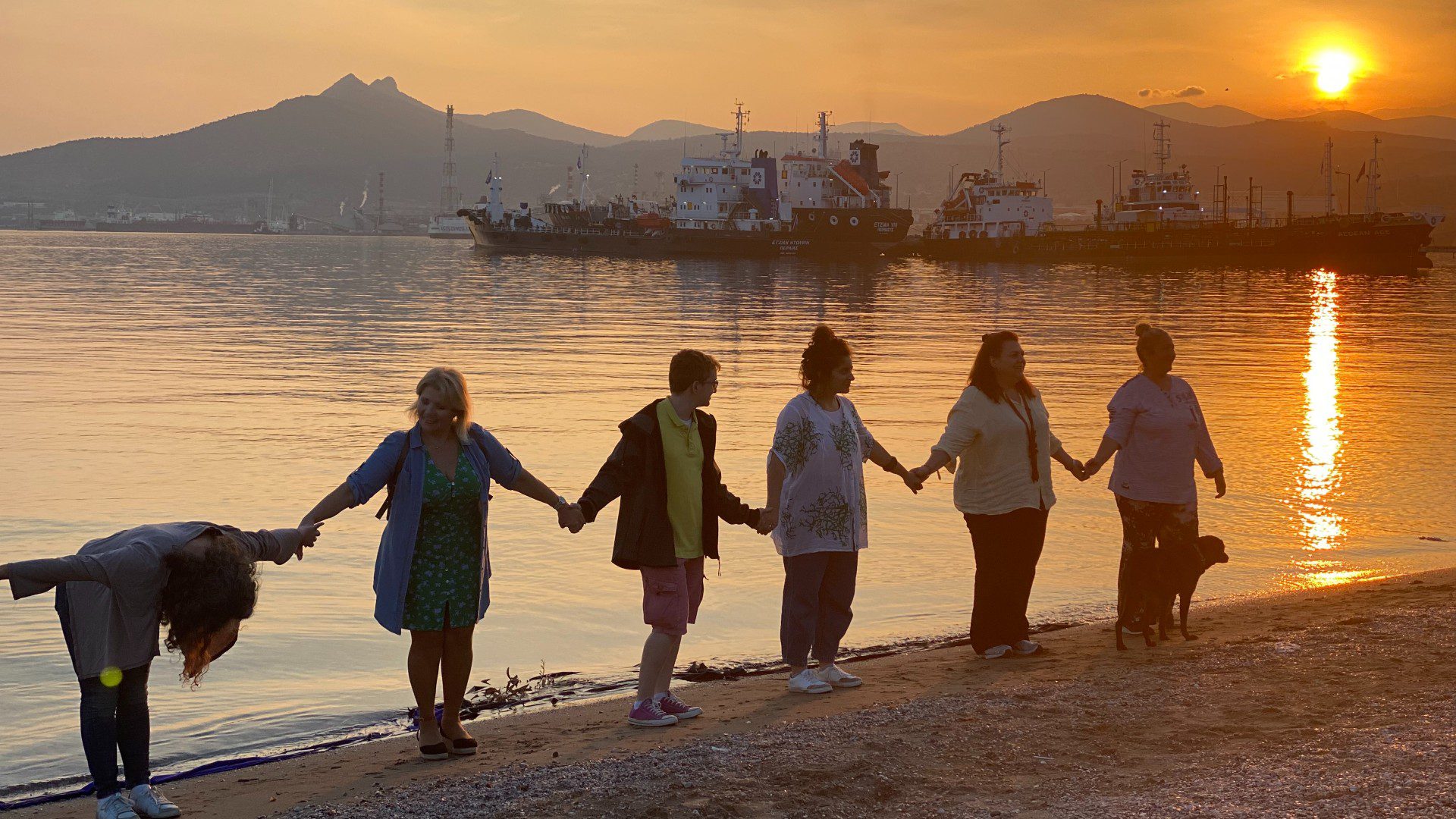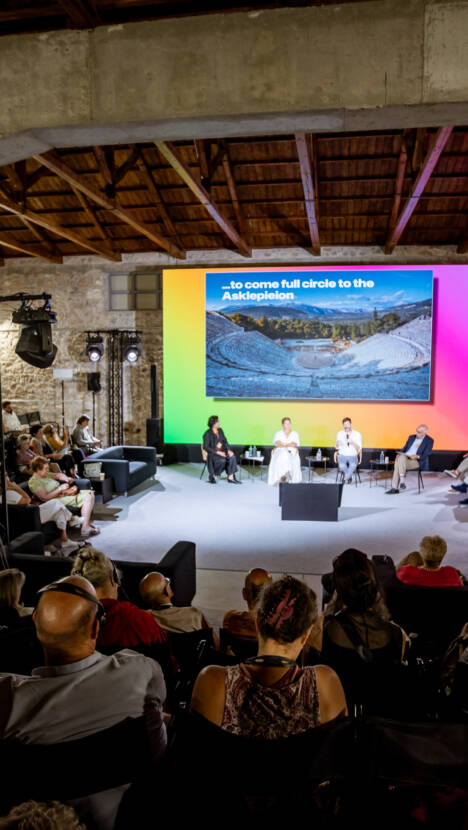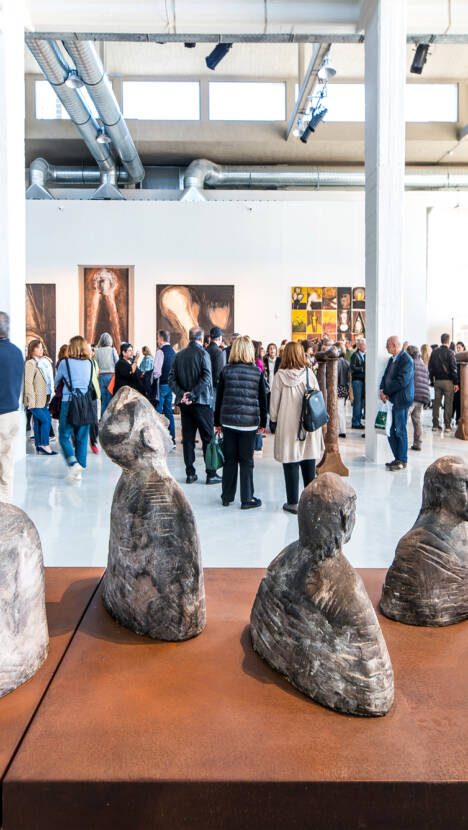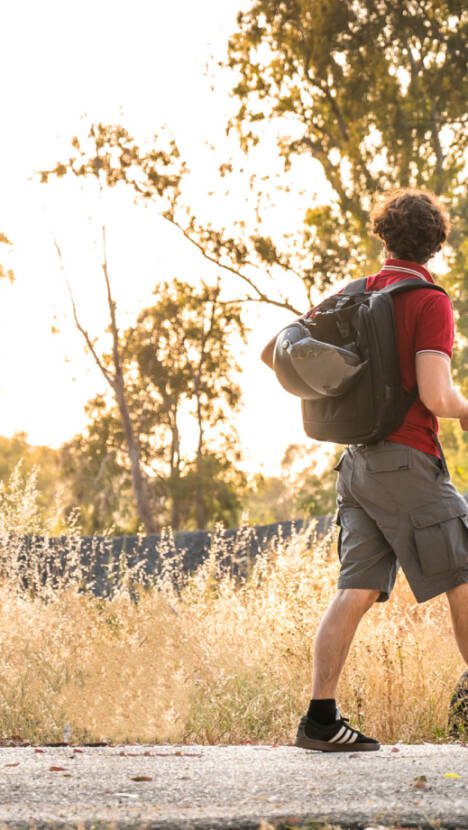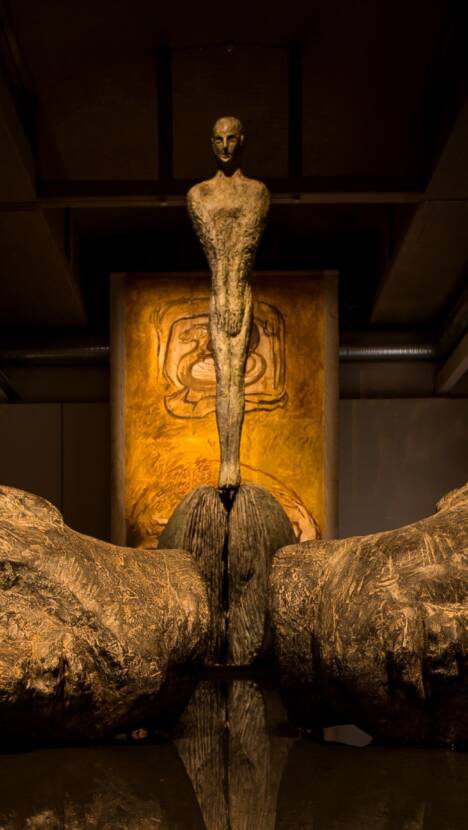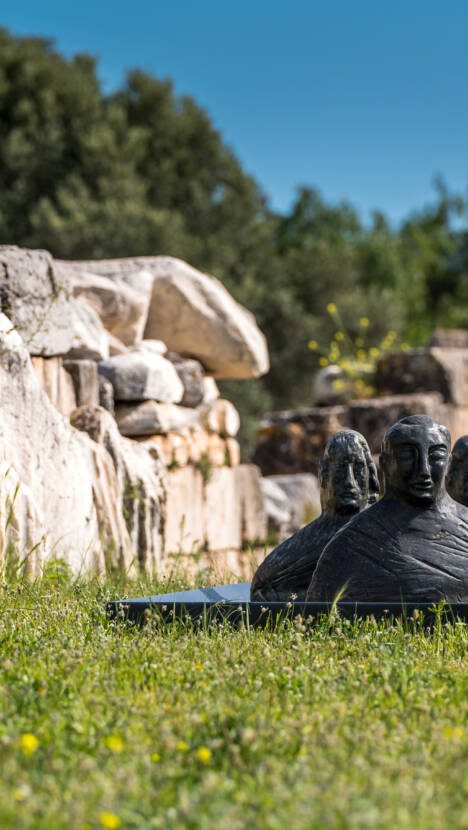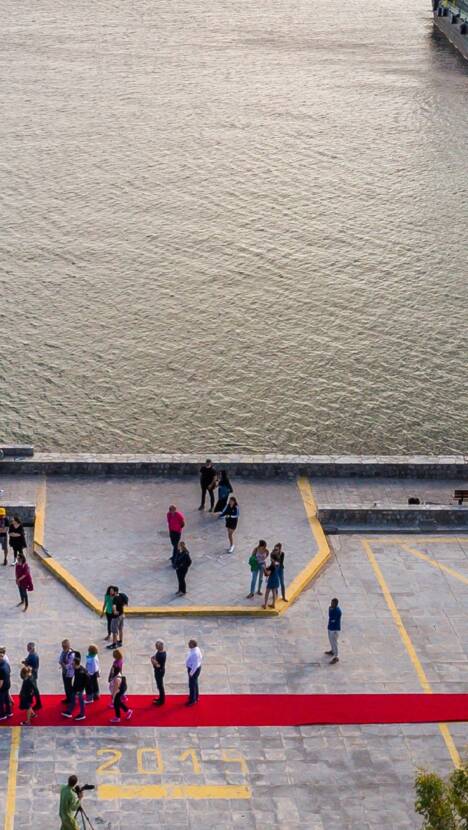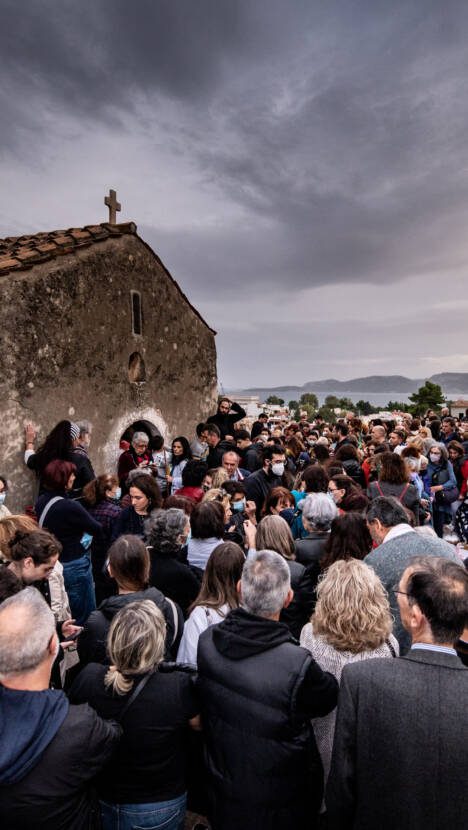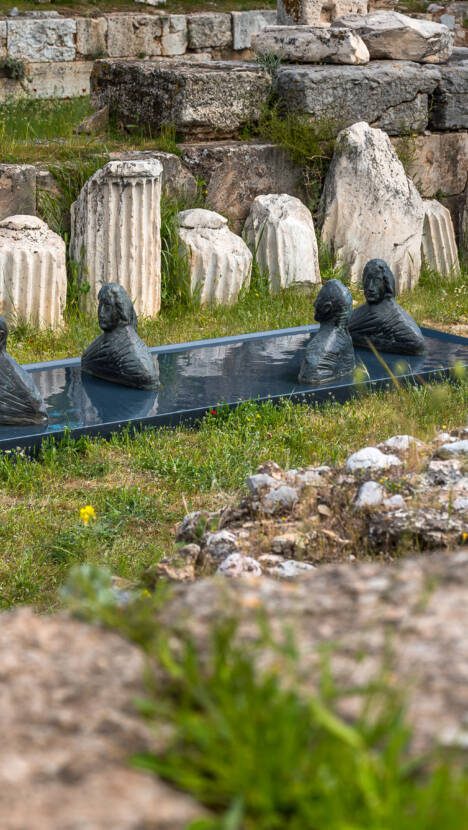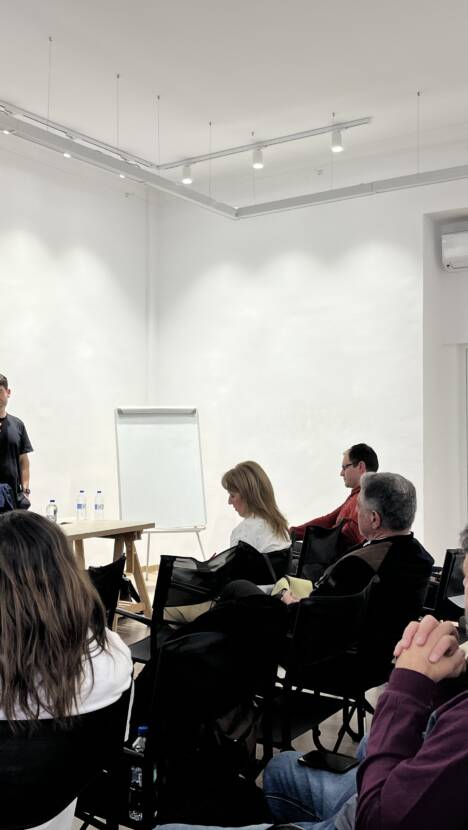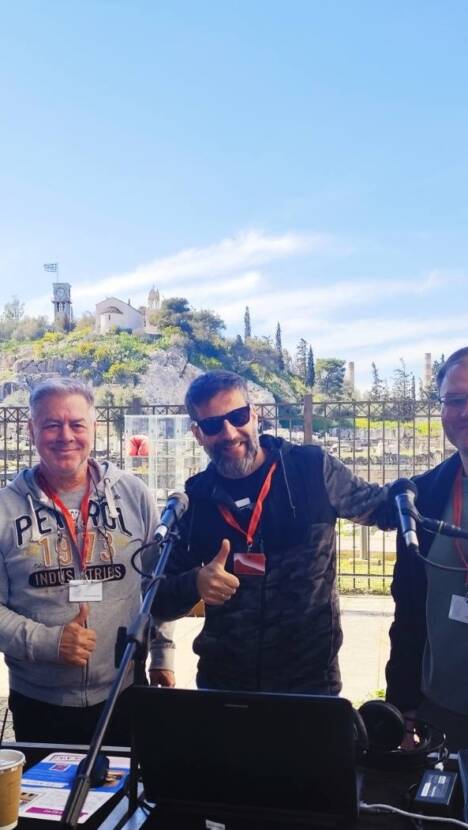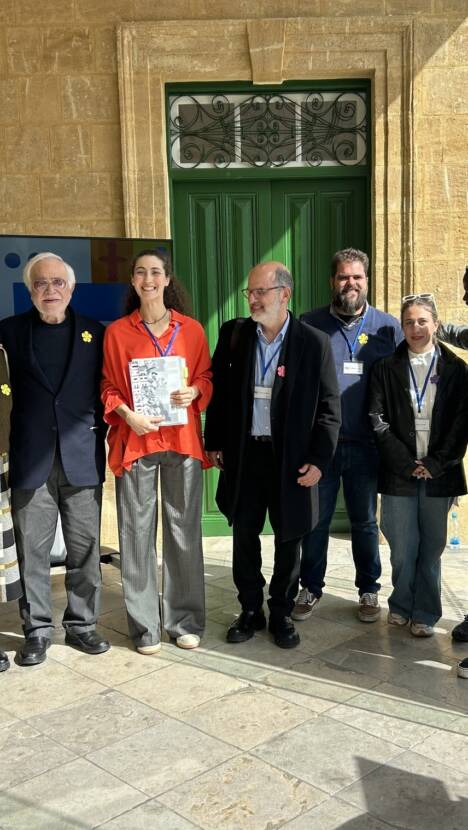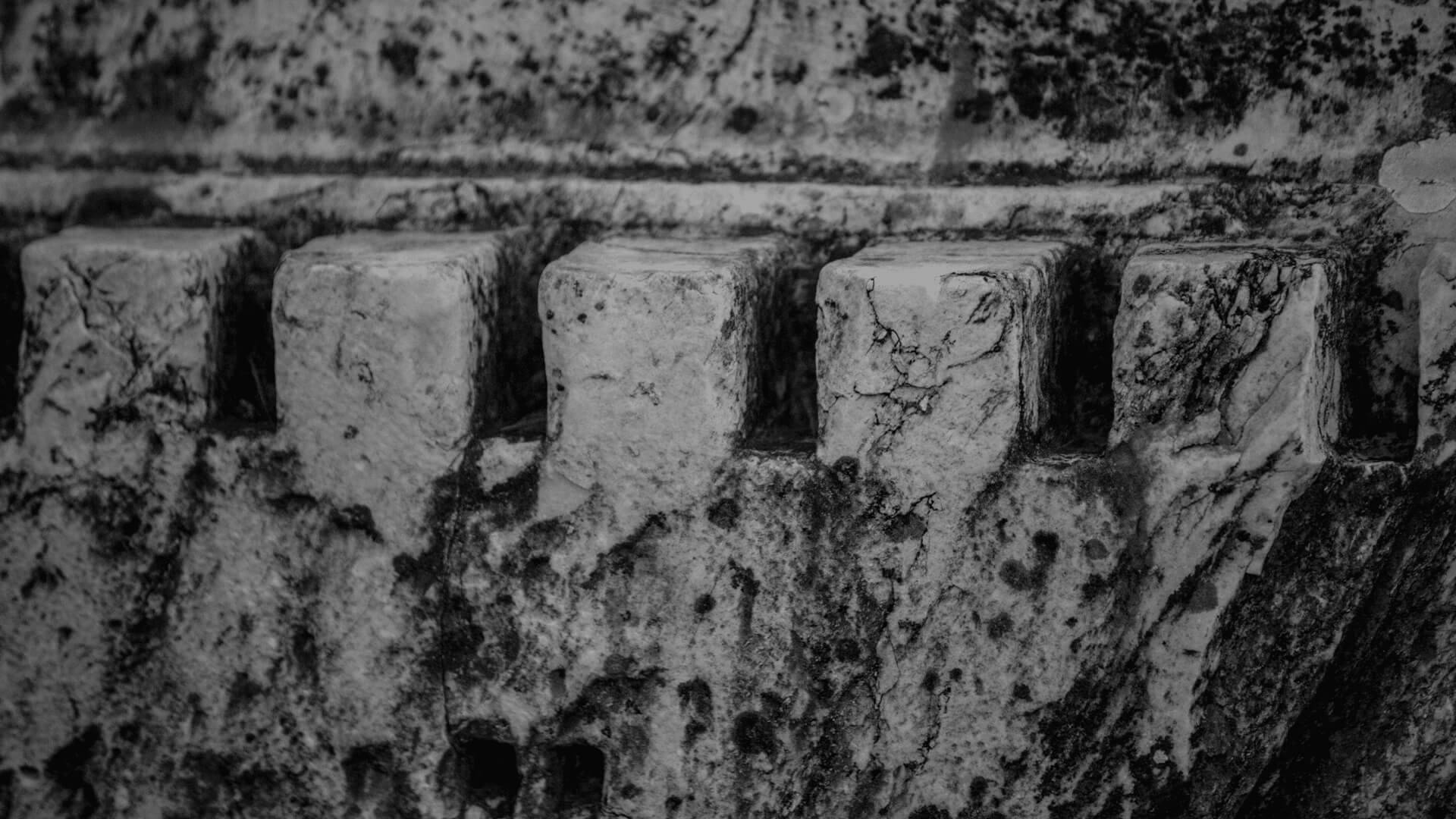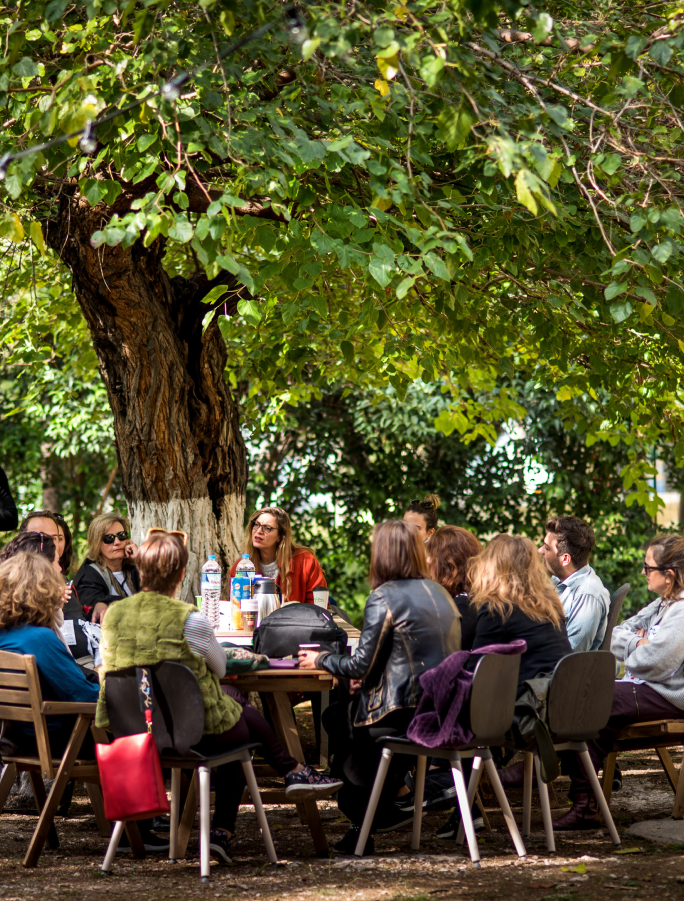Elefsina has all the necessary ingredients to map and recreate an inclusive future for all water bodies. From the local to the global, a collective speculative approach was implemented around key questions about the future of waters such as “What’s next for water? How can we design the future with water? Who is entitled to participate in water legislation, whose views and rules are heard and taken into account? Whose definitions, priorities and interests prevail?”.
Through a series of public interdisciplinary and interartistic meetings (workshops, lectures, performances, site visits, etc.) that took place from May 29 to June 30, 2023 at the Canteen art hub/ Anapsiktirio on the waterfront of Elefsina, Marketou introduced a multitude of participants – especially young people, children and citizens of Elefsina and the wider area of the Thriasian Field – in innovative ways to co-shape new potential socio-ecological futures with water as an active agent in shaping civil society and public space.
One of the main approaches that Marketou proposes is futuring, practices that bring actors to-gether around one or more speculative futures and through critical thinking and dialogue they share specific directions for action. The exhibition includes photographs and artifacts that came from the aforementioned meetings utilizing various futuring techniques. The works differ in their materiality, sometimes they consist of plasticine, fabric, paper and sometimes of legumes, shells, oysters and other materials, the majority of which are organic, non-polluting and do not submit to the extractive economy. Also, an immersive video installation with short interviews conducted with the meeting facilitators and selected documentation from the meetings is presented along with an installation of nine hanging banners printed with short poems created by the participants of the workshop Water Time led by Dimitra Ioannou.
Furthermore, Marketou places great emphasis on the body, on embodied and situated knowledge. Here, the body represents an important scale of analysis of space, our closest geography, a scale that resists the privileging of abstraction at the expense of lived experiences. Each body is both space and has its space; it produces space and is produced in space (Simonsen, 2003). With an interartistic attitude, Marketou, inspired by the poetry of Nathalie Diaz and more specifically her poem “The first water is the body”, is forming a political space for all bodies of water with oysters as protagonists. Thus, in a parallel outdoor event at Vlycha on September 22, 2023, she realizes a public sculptural intervention entitled The Hatchery using tabby, a mixture of oyster shells, sand, algae and water. The Hatchery deals with the filtering effect oysters have on water and proposes a poetic interpretation of underwater habitats inspired by the architecture of oysters, meaning a complex function that involves the purification of polluted waters and ensures the ecological well-being of seawater.
Finally, the exhibition is accompanied by a special printed publication entitled “A Speculative Manifesto for – and from the Water of Elefsina”, as a result of an οn-site and interdisciplinary research that includes, among other texts by the guests of the meeting, a comprehensive manifesto, a written declaration for and from the water of Elefsina demanding their rights by introducing the concept of personhood. The rights of nature recognize ecosystems as subjects of law and empower people and governments to defend nature’s rights for the benefit of ecosystems. The publication will be presented during a special launch on September 30, 2023.
A Speculative Manifesto for – and from the Water of Elefsina is part of Jenny Marketou’s year-long interdisciplinary research that examines ways of dealing with the climate crisis, which is linked to abusive human interventions in the environment. Marketou actively participates in the history of socially engaged and collaborative art that took shape in the ‘90s after a series of up-heavals of important conceptual and historical developments that took place in the ‘60s. After careful research, Marketou combines art and speculative design to create sculptural ecosystems using dead oysters and shells as raw and live material bringing our attention to ecological issues with focus on bodies of water. In addition, oysters not only act as water filters, sea level rise mitigators and food sources but also as a powerful metaphor for redefining both environmental and social justice. Marketou works internationally on hydropolitics: Her artistic practice is exemplified by her collaboration with scientists, activists, academics and boat builders as part of The Billion Oyster Project and the Swale Lab on Governors Island in New York, where she lives and works.
